Class 1 vs Class 2 vs Class 3 Safety Vests

For anyone operating in a dangerous or high-traffic environment, from toll booth operators to construction workers, railway workers, and emergency responders, safety is a crucial priority. One critical element of personal safety and visibility on the job is wearing safety vests. Often made from a fluorescent yellow-green polyester mesh with highly reflective tape strips, these vests ensure maximum visibility even in inclement weather or heavy traffic situations. But did you know there are different types of safety vests designed for varying degrees of risk and visibility requirements? Specifically, safety vests are classified into Class 1, Class 2, and Class 3 vests as outlined by the American National Standards Institute (ANSI).
In this blog post, we will take a deep dive into the unique features, uses, and safety standards of Class 1, Class 2, and Class 3 safety vests. Understanding these differences can help workers, and their employers make informed decisions about which vest class is ideal for their particular work environment and role, whether it be a construction site or a busy airport.
Stay with us as we unpack each ANSI safety vest class covering everything from the amount of reflective tape and background material required, to their optimal usage in the work field. Your safety is our priority!

Class 1 Safety Vests
First off, let's begin with Class 1 Safety vests. Described by the American National Standards Institute (ANSI) as suitable for workers in environments with minimal traffic flow and where the traffic does not exceed 25 miles per hour, these vests are designed to provide a certain level of necessary visibility in less complex backgrounds. This means if you're a delivery driver working in a warehouse, a forest worker in a less dense environment, or a parking attendant, a Class 1 safety vest would be sufficient for your day-to-day tasks.
These vests are characterized by their reflective tape on both the shoulders and midsection. Class 1 safety vests will often feature a minimum of one horizontal stripe along the midsection and two shoulder stripes forming a sort of mock suspender appearance. In some cases, they may have supplementary vertical stripes from the shoulder stripe to the midsection stripe. This design with the horizontal stripe highlights the wearer, helping drivers or heavy machinery operators notice the wearer and maintain a safe distance.
Reflective materials like reflective tapes and stripes are particularly useful in low light situations, increasing the visibility of the wearer. For Class 1 safety vests, the instructions set out by ANSI dictate the usage of a minimum of 155 square inches of reflective tape. For the vest's background material, a minimum of 217 square inches is necessary, designed to provide enough contrast against the wearer's environment.
The crucial point of a Class 1 safety vest is that it offers minimum protection and is not suitable for environments with heavier traffic, high-risk situations, or complex backgrounds. Instead, these vests work best in situations where contact with other workers or the public is limited, and the worker can devote their attention to their tasks without high-risk distractions.

Class 2 Safety Vests
Moving up a notch, we have the Class 2 safety vests. The ANSI states that these vests are suitable for workers operating in heavier traffic, poor weather conditions, or complex work environments where the speed exceeds 25 miles per hour. This could include airport baggage handlers, railway workers, school crossing guards, or utility crews, to name a few. Essentially, Class 2 vests are ideal for occupations involving greater visibility risks that Class 1 vests just can't tackle.
Class 2 safety vests, much like their Class 1 counterparts, are adorned with reflective tape. However, the key differentiating factor here is both the quantity and placement of this reflective material. ANSI standards prescribe a minimum of 201 square inches of reflective tape for Class 2 vests. This reflective tape is arranged to provide better visibility of the wearer under inclement weather conditions or in low light situations.
The horizontal stripe found on a Class 2 safety vest circles the waist, meeting the requirement from ANSI for 360-degree visibility. Additionally, the vest must feature at least two reflective tape bands extending from the chest over the shoulders and down to the waist at the back. This creates a clear outline of the wearer's torso, making it easier for moving vehicles to spot them.
Furthermore, the background material for a Class 2 safety vest must total a minimum of 775 square inches. This larger amount of background material and reflective tape strips ensure enhanced visibility in more complex backgrounds where workers need to stand out.
Class 2 Safety Vests From Qore Performance
Qore Performance offers a number of safety vests that present these features, without compromising on comfort or mobility. We understand the balance necessary between safety, functionality, and user satisfaction, and this is evident in our innovatively designed, ANSI compliant safety vest – Class 2 ICEVEST.
Our ICEVEST is setting the new standard for safety vests everywhere. We utilize innovative technology to give the wearer not only visibility, but also crucial benefits to safety, hydration, and temperature control. Our ICEVESTs accomplish this through our ICEPLATE hydration packs that can be easily inserted into the front and back of our safety vests. Our ICEPLATEs have the unique capability to serve as both a hydration supply and a source of temperature regulation.
Read more about the importance of our HiVis Class 2 Cooling Safety Vests in this blog.

Class 3 Safety Vests
Lastly, we should discuss Class 3 Safety Vests. When maximum visibility is of absolute importance, look no further than ANSI Class 3 safety vests. Class 3 vests are designed for environments with high-speed traffic, poor visibility conditions, or situations that pose a severe threat to workers. This could involve utility workers handling power outages during a storm, emergency personnel working at an accident scene on a highway, or construction workers on a major roadway.
Compared to Class 1 and 2 vests, Class 3 safety vests bear the most substantial amount of high-visibility materials. To meet the ANSI standards for Class 3, vests need to feature a minimum of 310 square inches of reflective stripes and at least 1,240 square inches of background material. The generous amount of reflective tape on a Class 3 vest ensures the wearer can be distinguished easily from a complex background, even from a long distance.
Similar to the Class 2 vests, these safety vests also have two shoulder reflective strips, but the standout feature is the additional reflective bands on the arms or sleeves. The arms' reflective bands, along with traditional horizontal torso and shoulder stripes, form a vivid representation of the wearer's complete physical form, ensuring a much higher level of visibility and recognition.
Remember, the importance of choosing the right P.P.E (Personal Protective Equipment) can never be overstated. In certain work environments, wearing the correct safety apparel can mean the difference between life and death.

Class 1 vs Class 2 vs Class 3 Safety Vests: Overview
Having explored the three classes of safety vests, it's clear that each class serves its unique purpose and is tailored to specific industries and working conditions.

A Summary of The Key Differences Between Class 1, Class 2, & Class 3 Safety Vests
While Class 1 vests are ideal for environments with minimum traffic and workers who can fully concentrate on their tasks, they are not designed for high-risk situations that involve higher-speed traffic or complex work environments. Instead, Class 2 vests are a step up, suited to professionals working in areas with heavier traffic and greater visibility risks. Providing 360-degree visibility, these vests are perfect for railway workers, airport baggage handlers, or school crossing guards. Finally, Class 3 vests cater to the needs of those in high-risk, high-traffic areas or dealing with blind spots due to complex backgrounds, offering the highest level of visibility based on ANSI standards.
Choosing the appropriate safety vest requires a thorough understanding of the working environment and potential hazards associated with it. Remember, while visibility is paramount, comfort should not be compromised, nor should mobility, ensuring workers can carry out their jobs effectively and safely.
Qore Performance Is Committed To The Advancement of Safety Vests
Qore Performance is dedicated to crafting high-quality, innovative safety vests that strike the ideal balance between visibility, functionality, and comfort. Each of our vests adheres to ANSI guidelines and goes beyond, bringing in our innovative cooling/heating technology, making them the ultimate choice for your respective fields.
As we conclude, it's worth noting that while safety vests play a vital role in maintaining workplace safety, they form part of the overall safety measures. Employers and workers alike must combine the use of appropriate safety apparel with proactive safety practices to create a safe and thriving work environment. Wear your vest, be seen, and be safe.




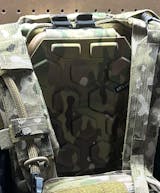



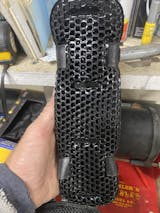
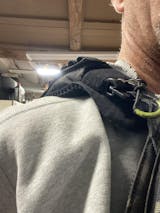
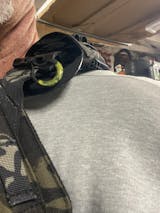
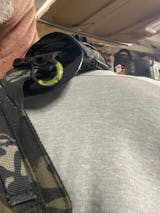
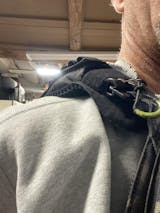
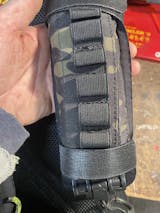
Leave a comment